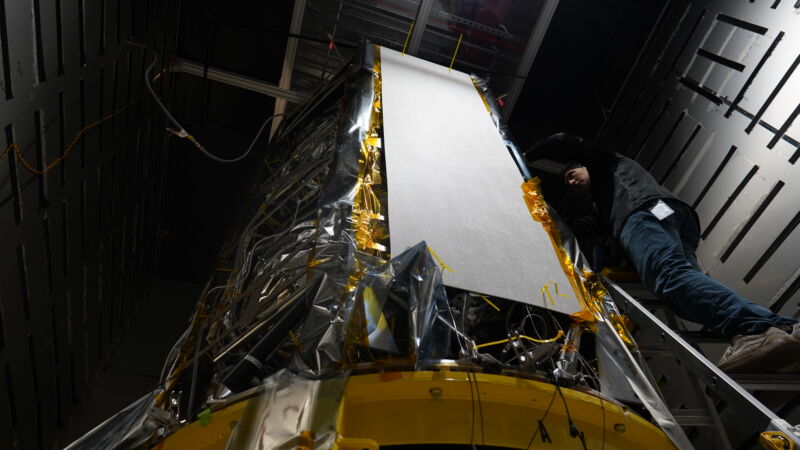
Enlarge / The second Intuitive Machines lander is prepared for hot-fire testing this week.
Intuitive Machines
One of the miracles of the Apollo Moon landings is that they were televised, live, for all the world to see. This transparency diffused doubts about whether the lunar landings really happened and were watched by billions of people.
However, as remarkable a technical achievement as it was to broadcast from the Moon in 1969, the video was grainy and black and white. As NASA contemplates a return to the Moon as part of the Artemis program, it wants much higher resolution video and communications with its astronauts on the lunar surface.
To that end, NASA announced this week that it had awarded a contract to Houston-based Intuitive Machines for “lunar relay services.” Essentially this means Intuitive Machines will be responsible for building a small constellation of satellites around the Moon that will beam data back to Earth from the lunar surface.
“One of the requirements is a 4K data link,” said Steve Altemus, co-founder and chief executive of Intuitive Machines, in an interview. “That kind of high fidelity data only comes from a data relay with a larger antenna than can be delivered to the surface of the Moon.”
About the plan
This is part of NASA’s plan to build a more robust “Near Space Network” for communications within 1 million miles of Earth (the Moon is about 240,000 miles from Earth). Intuitive Machines’ contract is worth as much as $4.82 billion over the next decade, depending on the level of communication services that NASA chooses to purchase.
The space agency is also expected to award a ground-based component of this network for large dishes to receive signals from near space, taking some of this burden off the Deep Space Network. Altemus said Intuitive Machines has also bid on this ground component contract.
The Houston company, with its IM-1 mission, made a largely successful landing on the Moon in February. A second lunar landing mission, IM-2, is scheduled to take place in late December or January, a few months from now. Funded largely by NASA, the IM-2 mission will carry a small drill to the South Pole of the Moon to search for water ice in Shackleton Crater.
Then, approximately 15 months from now, the company is planning to launch another lander, IM-3. This mission is likely to carry the first data-relay satellite—each is intended to be about 500 kg, Altemus said, but the final design of the vehicles is still being finalized—to lunar orbit. Assuming this first satellite works well, the two following IM missions will each carry two relay satellites, making for a constellation of five spacecraft orbiting the Moon.
Two of the satellites will go into polar orbits and serve NASA’s Artemis needs at the South Pole, Altemus said. Two more are likely to go into halo orbits, and a fifth satellite will be placed into an equatorial orbit. This will provide full coverage of the Moon not just for communications, but also for position, navigation, and timing.
Intuitive Machines rising
A former deputy director of Johnson Space Center, Altemus founded Intuitive Machines in 2013 along with an investor, Kam Ghaffarian, and an aerospace engineer named Tim Crain. It hasn’t always been easy. Development of Intuitive Machines’ Nova C lander took years longer than anticipated; there were setbacks such as a propellant tank failure, and money was at times tight.
In part to address these financial difficulties, the company went public in 2023, at the tail end of the mania in which space companies were becoming publicly traded via special purpose acquisition companies, or SPACs. Many space companies that went public this way have struggled mightily, and Intuitive Machines has also faced similar pressures.
“It’s been a challenge,” Altemus said. “We went public in 2023, and navigating that was the story of last year, as well as getting to the launch pad.”
But then good things started happening. Despite some technical troubles, including the failure of its altimeter, the company’s first lander managed a soft touchdown on the Moon on its side. Even with this untinended orientation, the Intuitive Machines-1 mission still managed to complete the vast majority of its science objectives. In August, the company won its fourth task order from NASA—essentially a lunar delivery mission—under the Commercial Lunar Payload Services program.
And then the company won the massive data relay contract this week.
“This has really been a transformational year for us,” Altemus said. “The vision for the company is finally coming together.”